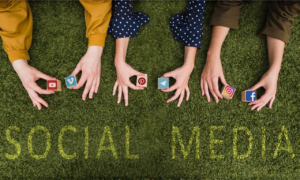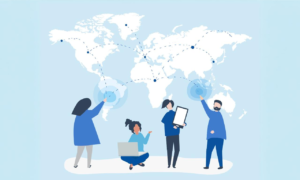Technology has transformed nearly every aspect of modern life, enhancing communication, improving productivity, and offering solutions to complex problems. However, its rapid evolution and widespread adoption have also introduced a range of challenges and disadvantages. This case study explores one of the most significant disadvantages of technology: its impact on mental health and social well-being, particularly the rise of digital addiction and its societal consequences.
Background
While technological advancements have revolutionized industries, education, healthcare, and entertainment, they have also given rise to concerns about their adverse effects on individuals and society. The pervasive use of smartphones, social media, and other digital technologies has led to increased reliance on screens and constant connectivity. These changes have contributed to rising levels of stress, anxiety, and mental health disorders, especially among younger populations.
The Impact of Technology on Mental Health
1. Digital Addiction
The widespread use of digital devices and social media platforms has led to what some experts describe as “digital addiction” – a compulsive reliance on screens for entertainment, social interaction, and information. This addiction is often fueled by the design of platforms that maximize user engagement, such as infinite scrolling, push notifications, and personalized content feeds.
Example: Social Media and Mental Health in Adolescents Research has shown that the constant exposure to social media platforms like Instagram, Snapchat, and TikTok can significantly affect the mental health of teenagers. The pursuit of likes, followers, and constant comparison to curated online lives can lead to feelings of inadequacy, depression, and anxiety. Studies have found that excessive social media use is linked to higher levels of stress, poorer sleep, and greater vulnerability to bullying and harassment.
Impact: The rise of digital addiction has been particularly concerning for the younger generation. Adolescents and young adults are spending increasing amounts of time on social media, leading to a disconnection from real-world interactions. This can result in poor social skills, diminished face-to-face relationships, and increased loneliness. Moreover, the pressure to maintain an idealized online persona has been associated with self-esteem issues and body image concerns.
2. Increased Stress and Anxiety
The constant stream of information enabled by smartphones, emails, and news apps can lead to information overload, contributing to heightened stress levels. The desire to stay connected and be responsive in real time often leaves individuals feeling overwhelmed, especially when personal boundaries between work, school, and home life become blurred.
Example: The “Always-On” Work Culture The rise of remote work and digital communication tools such as Slack, Microsoft Teams, and Zoom has created an “always-on” work culture. Employees are expected to be available 24/7, resulting in a lack of work-life balance. Many workers find themselves checking emails and messages outside of working hours, leading to stress and burnout.
Impact: The digital era has led to the normalization of overwork, often with little regard for personal time. This culture of always being available is not only contributing to physical exhaustion but is also increasing stress, anxiety, and mental health challenges among employees. The boundaries between work and personal life have become increasingly blurred, with long-term implications for overall well-being.
3. Decreased Face-to-Face Interaction
As digital communication becomes more prevalent, face-to-face interactions are becoming less frequent. While digital tools like messaging apps, video calls, and social media have made it easier to stay in touch, they can never fully replicate the depth and richness of in-person communication. The lack of physical presence and non-verbal cues can create misunderstandings and weakens emotional connections.
Example: The Decline of Social Skills in Children Children, especially those growing up with easy access to smartphones and tablets, are spending less time engaging in face-to-face play and communication. Research has shown that this decline in social interaction can affect the development of important social skills, such as empathy, emotional intelligence, and conflict resolution.
Impact: As young people interact more frequently through digital mediums, they may miss out on the essential skills gained from in-person socialization. This may lead to increased social isolation, difficulty in forming meaningful relationships, and challenges in understanding emotional cues. Over time, this can have long-term effects on personal and professional life, especially as face-to-face communication remains an important skill in the workplace.
Addressing the Disadvantages: Solutions and Mitigating Actions
1. Promoting Digital Detox and Mindful Technology Use
To combat digital addiction and its negative effects on mental health, experts recommend engaging in regular digital detoxes—periods where individuals disconnect from their devices to focus on offline activities, relaxation, and face-to-face interactions.
Example: The “Take Back Your Time” Initiative Some mental health advocates and organizations have launched initiatives to encourage people to take breaks from digital devices. Programs like “Take Back Your Time” promote mindfulness practices, outdoor activities, and social gatherings as alternatives to screen time.
Impact: Encouraging people to disconnect from technology and engage in offline activities can reduce stress, improve mental health, and foster more meaningful in-person relationships. Mindfulness practices can help individuals become more aware of their technology use and its effects on their well-being.
2. Setting Boundaries for Work-Life Balance
To address the “always-on” work culture, businesses can adopt policies that encourage a better work-life balance. Setting clear boundaries for work hours, limiting after-hours communication, and promoting mental health resources are essential steps in preventing burnout.
Example: Germany’s Right to Disconnect Law In 2019, Germany introduced the “right to disconnect” law, which allows employees to turn off their work emails and messages outside of regular work hours without facing penalties. This law aims to reduce stress, improve work-life balance, and enhance employee well-being.
Impact: Encouraging boundaries between work and personal time helps prevent the negative effects of digital overuse. When employees have time to rest and recover, their productivity, creativity, and overall satisfaction improve, leading to better outcomes for businesses and individuals alike.
3. Enhancing Education on Digital Literacy
As digital technology continues to evolve, digital literacy must be taught to children and adults alike. Understanding how to use technology responsibly, maintain privacy, and navigate the digital world safely is essential in mitigating its harmful effects.
Example: Digital Literacy Programs in Schools Several educational systems around the world are introducing digital literacy as part of their curriculum. These programs aim to teach children how to manage screen time, understand the risks of social media, and use technology in a balanced, healthy way.
Impact: By equipping the younger generation with digital literacy skills, we can help them use technology responsibly and avoid potential negative consequences, such as addiction, online harassment, and cyberbullying.
Conclusion
While technology has undeniably transformed our world for the better, it has also introduced a set of challenges, particularly regarding its impact on mental health and social well-being. The rise of digital addiction, increased stress, and the decline of face-to-face interaction are all significant disadvantages of technology. However, by promoting digital detoxes, setting clear work-life boundaries, and fostering digital literacy, we can mitigate these negative effects. Ultimately, the key to maximizing the benefits of technology while minimizing its disadvantages lies in how we use it. Through mindful, intentional use, we can create a balanced relationship with technology that enhances rather than detracts from our well-being.



